9 Types of Digital Marketing Channel to Use Today For Your Business
Today, there are many effective digital marketing channels you can choose from, ranging from totally free content marketing strategy to paid options.
Each online marketing tools have it’s own pros and cons, and is suitable for different types of digital marketing strategies. Let’s find the right marketing channels for your business.
KEY TAKEAWAYS
- Digital marketing channels includes Email Marketing, Webinars, Social Media, SEO, Content, PPC Advertising, Word of Mouth/Referral, Influencer, and Affiliate Marketing.
- Conversion Rates varies between each marketing channels, from as low as 0.3% to as high as 73%, you need to understand each channel to aligns with your marketing goals.
- Choosing the right channel means to understand your audience, relevance, alignment with business goals, budget, and continuous A/B testing to optimize your conversion rate.
Top Digital Marketing Channels Conversion Rates
To make your journey as an digital marketer easier when creating your own sales funnel, here is an complete list of the best digital marketing channels and each of their conversion rates as an marketing funnel for B2B or B2C business.
| Marketing Channel | B2C Conversion Rate | B2B Conversion Rate | Description |
|---|---|---|---|
| Email Marketing | 2.8% | 2.4% | Conversion rate for email campaigns include; signing up for a newsletter, downloading resources, or completing a purchase. |
| Webinar Marketing | 20% | 73% | Conversion rate for webinars include; filling out a form, becoming a lead, downloading resources, or completing a purchase. |
| Social Media Marketing (Organic) | 2.4% | 1.7% | Conversion rate for organic social media campaigns include; following a brand, sharing content, or completing a purchase. |
| Social Media Marketing (Paid) | 2.1% | 0.9% | Conversion rate for paid social media campaigns include; following a brand, sharing content, or completing a purchase. |
| Search Engine Optimization (SEO) | 2.1% | 2.6% | Organic search traffic conversions, including; filling out a form, downloading resources, or completing a purchase. |
| Pay-Per-Click Advertising (PPC) | 2% | 3.5% | Paid search traffic conversions, including; filling out a form, downloading resources, or completing a purchase. |
| Sales Page and Landing Page Marketing | 9.87% | 13.28% | Conversion rate for a typical sales page includes; filling up a form, making a purchase, or signing up for an event. |
| Micro-influencers Marketing (10K-100K followers) | 1.1% | Approx. 0.8% | Conversion rate for micro influencer campaigns include; following a brand, sharing content, or completing a purchase. |
| Macro-influencers Marketing (100K-1M followers) | 0.7% | Approx. 0.8% | Conversion rate for macro influencer campaigns include; following a brand, sharing content, or completing a purchase. |
| Mega-influencers Marketing (1M+ followers) | 0.3% | Approx. 0.8% | Conversion rate for mega influencer campaigns include; following a brand, sharing content, or completing a purchase. |
| Affiliate Marketing | 2.0% | 1.2% | Conversion rate for affiliate campaigns include; filling out a form, downloading resources, or completing a purchase. |
9 Types of Digital Marketing Channels for Online Marketing
With a huge variety of digital marketing channels to use, you can utilizes various marketing techniques for your sales funnel to help you reach your marketing goals.
However not all digital marketing works for all types of online business, some marketing tactics are more suitable for certain advertising and marketing campaigns while others requires more marketing resources to make it work.
Let’s take a look at each of the best digital marketing channels, the pros, cons and how you can get started with it.
1. Email Marketing
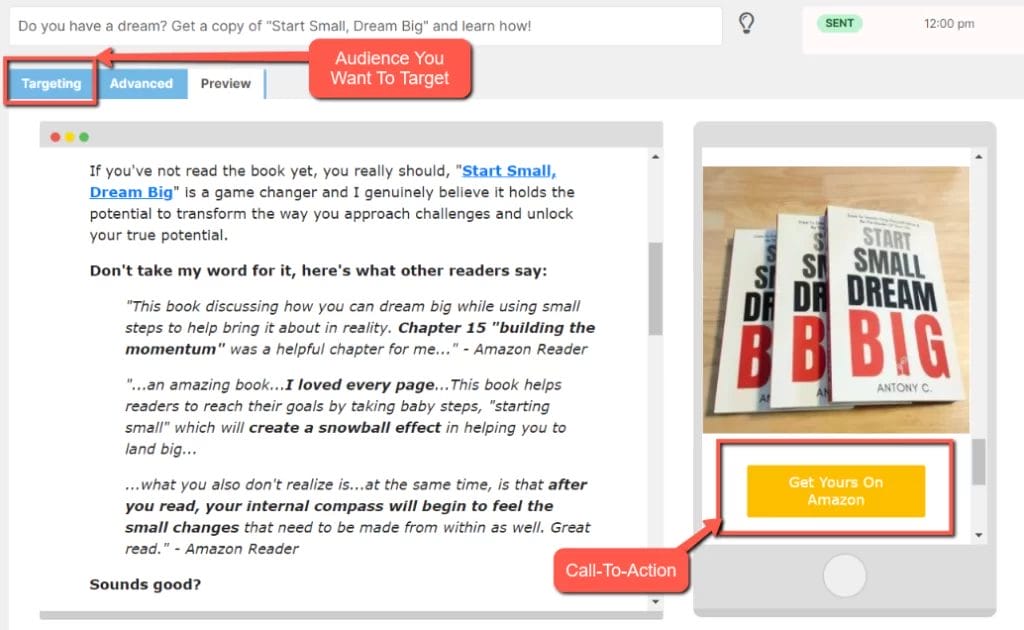
Email marketing is a powerful digital channel that allows you to connect directly with your audience through their inboxes.
It goes something like this:
- Get started by subscribing to our Newsletter below, fill in “your name” and “your email“.
- Click “subscribe” and you’ll be added to our Email list.
- In the following days, I’ll be sending you a series of email that helps you reach closer to your goals.
Yup, getting started with email marketing is as simple as that.
And what I’ve just did is a call-to-action.
An action where I ask you to subscribe to the newsletter to get helpful information for free.
“So, are you done subscribing? Good.”
Email marketing is not just about sending promotional content or spamming your subscribers’ inbox; it’s a personalized engagement strategy aimed at building lasting relationships.
Pros of Email Marketing
There are many reasons why you may want to use email marketing for your online business.
- Direct Communication: Reach your audience in the most direct way possible – their inbox.
- Cost-Effective: Achieve significant results without breaking the bank.
- Automation Magic: Harness the power of automation for targeted and timely campaigns.
Cons of Email Marketing
No strategy is without its challenges. Here’s what you need to consider:
- Spam Concerns: Navigate the fine line between promotion and spam to maintain inbox credibility.
- Content Fatigue: Keep things fresh to prevent your audience from losing interest.
- Constant Adaptation: Stay vigilant as email marketing trends and algorithms evolve.
Getting Started with Email Marketing
Let’s break down the steps to kickstart your email marketing journey:
- Build Your List: Lay the foundation by creating and segmenting your email list.
- Craft Engaging Content: Dive into the art of creating content that resonates with your audience.
- Automate for Efficiency: Implement automation to streamline your campaigns and enhance personalization.
Email marketing is not just about sending emails; it’s about sending the right emails to the right people at the right time.
2. Webinar Marketing

Webinars, short for web seminars, are live, online events that provide an interactive platform for presenting information, fostering engagement, and building relationships with your audience.
Unlike other form of marketing, create and host webinar as a marketing strategy can comes in various formats:
- Live webinar
- Evergreen automated webinar
- On-Demand webinar
- Just-In-Time webinar
Pros of Webinar Marketing
Webinar marketing comes with many benefits, of which I personally think it offers so much advantage that you should really try doing it, if you are not camera shy and is looking to grow your business effectively.
- Building Authority: Position yourself as an industry expert by sharing valuable insights in real-time.
- Direct Interaction: Forge a genuine connection with your audience through live Q&A sessions.
- Lead Generation: Capture valuable leads by offering exclusive content accessible through webinar registration.
Cons of Webinar Marketing
While it offers many benefit, it does have its own drawbacks and you need to be aware of webinar marketing’s own set of challenges:
- Preparation Demands: Hosting successful webinars necessitates thorough planning and preparation.
- Technical Hurdles: Be prepared to address potential technical glitches during live sessions.
- Limited Reach: Compared to other channels, webinars may have a more confined audience reach.
Getting Started with Webinar Marketing
Embark on your webinar journey with these strategic steps:
- Define Your Goals and Topics: Clearly outline the objectives of your webinar and choose relevant topics.
- Select a Reliable Platform: Choose a reputable webinar platform that aligns with your audience size and engagement needs.
- Promote Effectively: Generate anticipation by strategically promoting your webinars across various channels.
Webinar marketing success is not just about hosting live sessions; it’s about creating an immersive experience that resonates with your audience.
3. Social Media Marketing

Social Media Marketing is about using social media platforms to connect with your audience, build brand awareness, and drive desired actions.
Creating relevant content on social media, you can get started with social media marketing campaign with a few simple click.
Most of us have a social media account where we do hours of mindless scrolling on. Social media marketing put your message in front of these people who are scroll on their social media.
Pros of Social Media Marketing
There are a whole range of benefits that make social media an indispensable component of your digital strategy:
- Global Reach: Engage with a vast, diverse audience transcending geographical boundaries.
- Brand Personality: Showcase the human side of your brand, fostering relatability.
- Real-Time Interaction: Instantly connect with your audience through comments, likes, and shares.
Cons of Social Media Marketing
Having said that, there are also an unique set of challenges that come with the dynamic nature of social media:
- Algorithm Changes: Stay adaptable as platforms regularly update their algorithms.
- Content Saturation: Break through the noise to ensure your content doesn’t get lost in the vast social landscape.
- Negative Feedback: Be prepared to address negative comments or feedback publicly.
Getting Started with Social Media Marketing
Embark on your social media journey with these strategic steps:
- Identify Your Platforms: Choose social media platforms aligning with your target audience and business goals.
- Create Compelling Content: Craft visually appealing and engaging content tailored to each platform.
- Consistent Engagement: Foster a community by actively engaging with your audience through comments, messages, and shares.
With social media, success lies not just in posting content, but in creating meaningful connections and fostering a community around your brand.
4. Search Engine Optimization Marketing
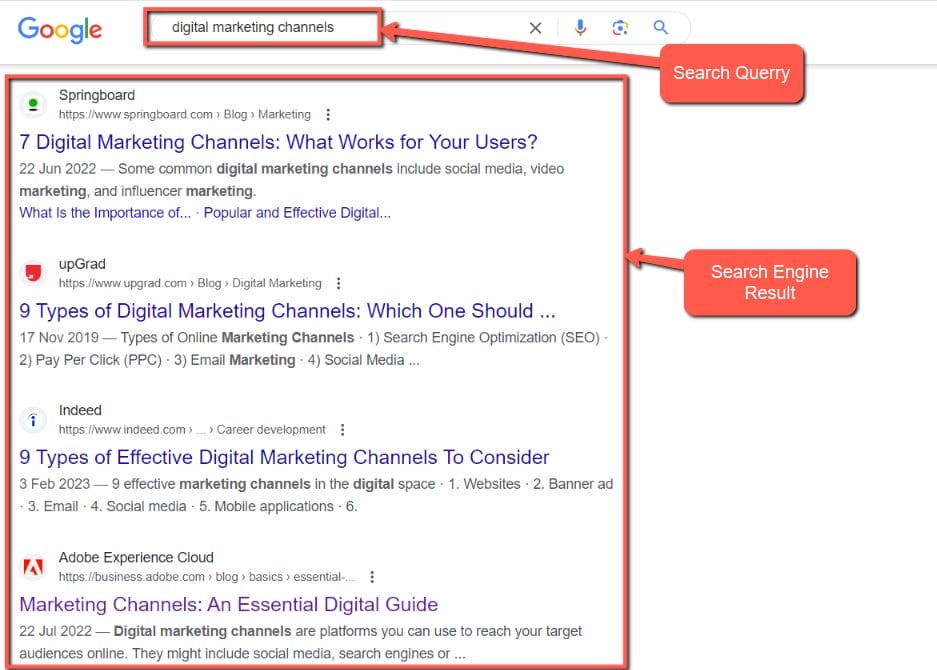
Search Engine Optimization is the strategic process of enhancing your website’s visibility on search engine results pages (SERPs). It involves optimizing various elements to align with search engine algorithms and user intent.
Search engine marketing is one of the most effective marketing channels and it is key to many big brands like Amazon, Microsoft and Nike who spend millions of dollars on search engine optimization.
You’ve probably find this article through search engine like Google or Bing, and this is through the power of SEO that is build within this article.
Powerful? Amazed?
Yup, I am pretty amazed as well.
Pros of SEO
SEO a cornerstone of digital success there are some very good reason why:
- Organic Visibility: Secure prominent placements in search results without resorting to paid advertising.
- Credibility and Trust: High-ranking pages are often perceived as more trustworthy by users.
- Long-term Impact: Establish a sustainable online presence with lasting results.
Cons of SEO
SEO is by far the hardest to master, it is powerful, but it have its own set of barriers you need to overcome:
- Time-Intensive Process: Achieving significant results requires time and ongoing efforts.
- Algorithm Uncertainties: Adapt to the ever-evolving algorithms of search engines.
- Competitive Landscape: Compete with numerous other websites vying for the same top positions.
Getting Started with SEO
Interested in SEO? You can get started on your SEO journey with these strategic steps:
- Keyword Research: Identify relevant keywords that align with your content and audience.
- On-Page Optimization: Fine-tune your website’s content, meta tags, and structure for optimal visibility.
- Quality Link Building: Cultivate high-quality backlinks to enhance your site’s authority.
SEO success hinges on understanding the dynamics of search engines and aligning your digital strategy accordingly.
5. Content Marketing
Content Marketing revolves around creating and distributing valuable, relevant, and consistent content to attract and retain a defined audience.
It’s about storytelling that goes beyond selling, aiming to connect authentically with your audience. What you are reading right now, is a type of content marketing, but it can also come in various forms.
- Written content
- Video content
- Audio content
Pros of Content Marketing
Content marketing comes with various compelling advantages that make it the holy grail for most marketers:
- Audience Connection: Forge a genuine connection by addressing the needs and interests of your audience.
- Brand Authority: Establish your brand as an authority in your industry through informative and valuable content.
- Versatility: Embrace diverse content types—from blog posts and videos to infographics—to cater to varied audience preferences.
Cons of Content Marketing
However, creating content isn’t as easy as it may seems, good content is actually really hard to come by and it is very challenging to create for effective content marketing campaigns:
- Time-Intensive: Crafting high-quality content demands time and commitment.
- Content Saturation: Stand out amidst a sea of content by ensuring uniqueness and relevance.
- Measuring ROI: Quantifying the exact return on investment can be a complex task.
Getting Started with Content Marketing
Want to start on doing content marketing, here are some steps simplified for you:
- Understand Your Audience: Tailor your content to address the specific needs and preferences of your target audience.
- Diversify Content Types: Experiment with various formats—blogs, videos, podcasts—to cater to different consumption habits.
- Consistent Publishing: Establish a regular publishing schedule to maintain audience engagement.
Content marketing success lies not just in creating content for the sake of it but in crafting narratives that resonate and inspire action.
6. PPC Advertising
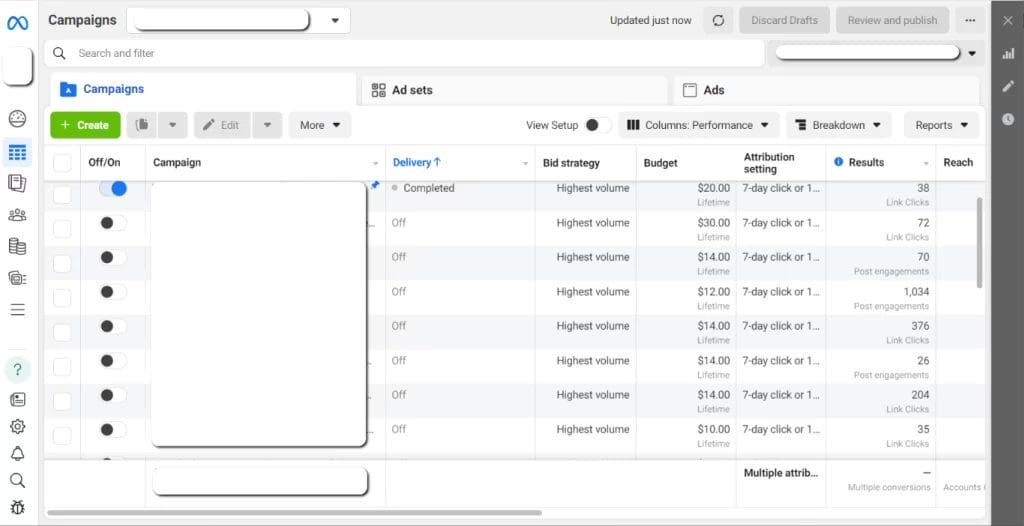
Pay-Per-Click Advertising involves placing online ads and paying a fee each time a user clicks on the ad. It’s a targeted approach that ensures you pay for actual engagement rather than mere visibility.
In other words, it is the power of using money to make money.
A common marketing tactic used by many marketers and business owners who are looking for quick results.
Pros of PPC Advertising
Advantages of PPC advertising are many, and it is probably one of the most impactful component of your digital strategy (if you have the money):
- Instant Visibility: Achieve immediate exposure and appear at the top of search engine results.
- Targeted Reach: Precision-target your audience based on demographics, interests, and online behavior.
- Measurable Results: Gain clear insights into the performance of your ads through detailed analytics.
Cons of PPC Advertising
Like everything else, PPC marketing have its own set of challenges and is not suitable for everyone:
- Cost Considerations: While effective, PPC can incur costs, especially for competitive keywords.
- Ad Fatigue: Balancing frequency to avoid overwhelming your audience with the same ads.
- Dependency on Budget: The impact diminishes once your ad budget is exhausted.
Getting Started with PPC Advertising
Starting on PPC is really easy, but mastering it is very hard and can get expensive really fast, however here are some steps you may want to consider:
- Keyword Research: Identify high-performing keywords relevant to your products or services.
- Compelling Ad Copy: Craft attention-grabbing and concise ad copies that prompt action.
- Landing Page Optimization: Ensure the landing pages align seamlessly with your ad content for a cohesive user experience.
PPC advertising success lies in strategic bidding, compelling content, and a keen understanding of your target audience.
7. Word of Mouth/Referral Marketing

Word of Mouth Marketing involves encouraging satisfied customers to share their positive experiences with your brand, products, or services.
Referral programs formalize this process, incentivizing customers to refer others.
It is the oldest form of marketing, and it is also almost always the most effective form of marketing.
Pros of Word of Mouth/Referral Marketing
Word of mouth marketing a powerful ally in your digital strategy especially if you are selling a high ticket service or product:
- Trust and Credibility: Recommendations from friends or family carry significant weight, building trust.
- Cost-Effective: Leverage existing customers as brand advocates without substantial advertising costs.
- Community Building: Cultivate a community of loyal customers invested in your brand’s success.
Cons of Word of Mouth/Referral Marketing
Even when this form of marketing seems to have one of the highest conversion rate, it’s challenges is inherent in relying on organic advocacy:
- Limited Control: You have limited control over the narrative as it relies on user-generated content.
- Incentive Balancing: Striking the right balance in referral incentives to motivate without seeming excessive.
Getting Started with Word of Mouth/Referral Marketing
Looking to get started in cultivating word of mouth marketing? Here are some steps you may want to take:
- Create a Seamless Experience: Ensure your products or services deliver an exceptional experience, laying the foundation for positive word of mouth.
- Implement a Referral Program: Design a referral program that rewards both the advocate and the referred party.
- Leverage Social Proof: Showcase customer testimonials and positive reviews to amplify the impact of word of mouth.
Word of mouth marketing is driven by the power of authenticity and customer satisfaction, these two elements are the driving forces.
8. Influencer Marketing
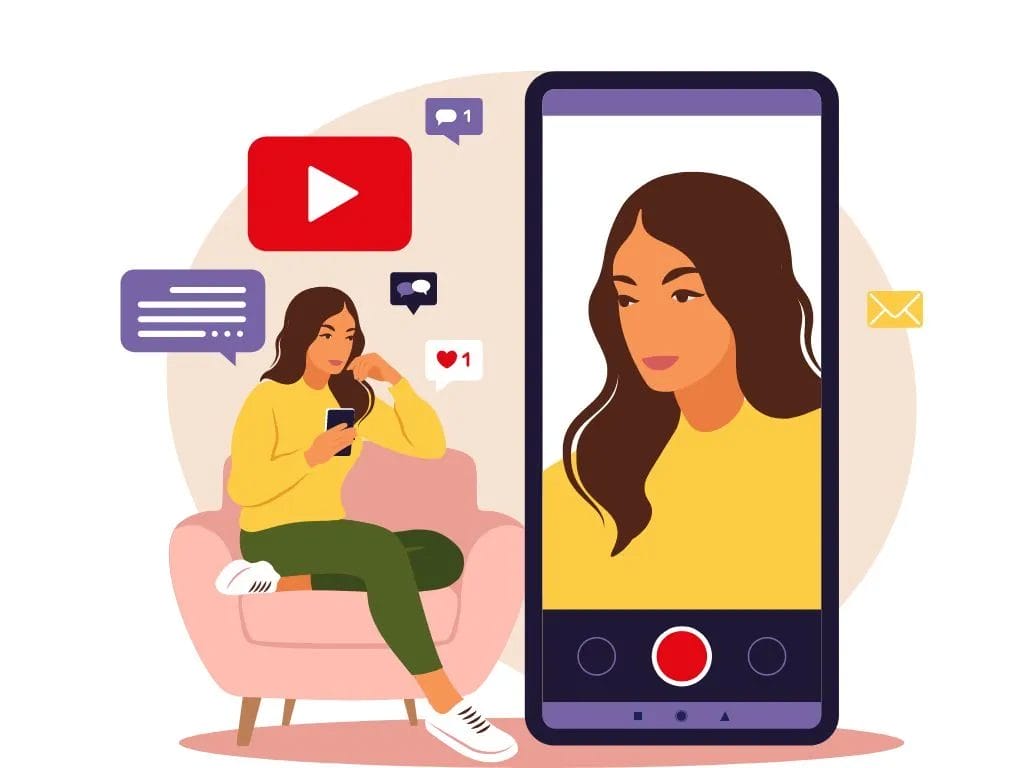
Influencer Marketing involves partnering with individuals who wield influence over a specific audience.
These influencers, often active on social media platforms, can effectively endorse and promote your brand to their followers.
You often see these when you are watching a YouTube and the presenter suddenly promotes a certain product to their audience.
Die-hard followers will often get converted and buy the product recommended by the influencers. Not sure about you, but I sure did that a few times.
Pros of Influencer Marketing
Influencers are like mega stars online, much like the TV stars promoting a product in the TV commercial. Influencer marketing have many advantages:
- Targeted Reach: Leverage influencers whose audience aligns with your target demographic.
- Credibility Transfer: Benefit from the trust established by influencers with their followers.
- Diverse Content: Tap into the creativity of influencers for authentic and diverse content creation.
Cons of Influencer Marketing
However, there are also some challenges that come with influencer collaborations:
- Authenticity Concerns: Ensure influencers align with your brand values to maintain authenticity.
- Cost Considerations: High-profile influencers may demand substantial compensation for partnerships.
- Risk of Misalignment: The influencer’s actions and personal choices can impact your brand.
Getting Started with Influencer Marketing
Getting started in leveraging this marketing offers much higher conversion than typical TV commercial, you can get started by taking these strategic steps:
- Identify Relevant Influencers: Research and collaborate with influencers whose audience matches your target demographic.
- Establish Clear Guidelines: Clearly communicate your brand guidelines and expectations to maintain consistency.
- Build Genuine Relationships: Foster authentic connections with influencers to create long-lasting partnerships.
Successful influencer marketing lies in choosing influencers whose values align with your brand, fostering credibility and resonance.
9. Affiliate Marketing
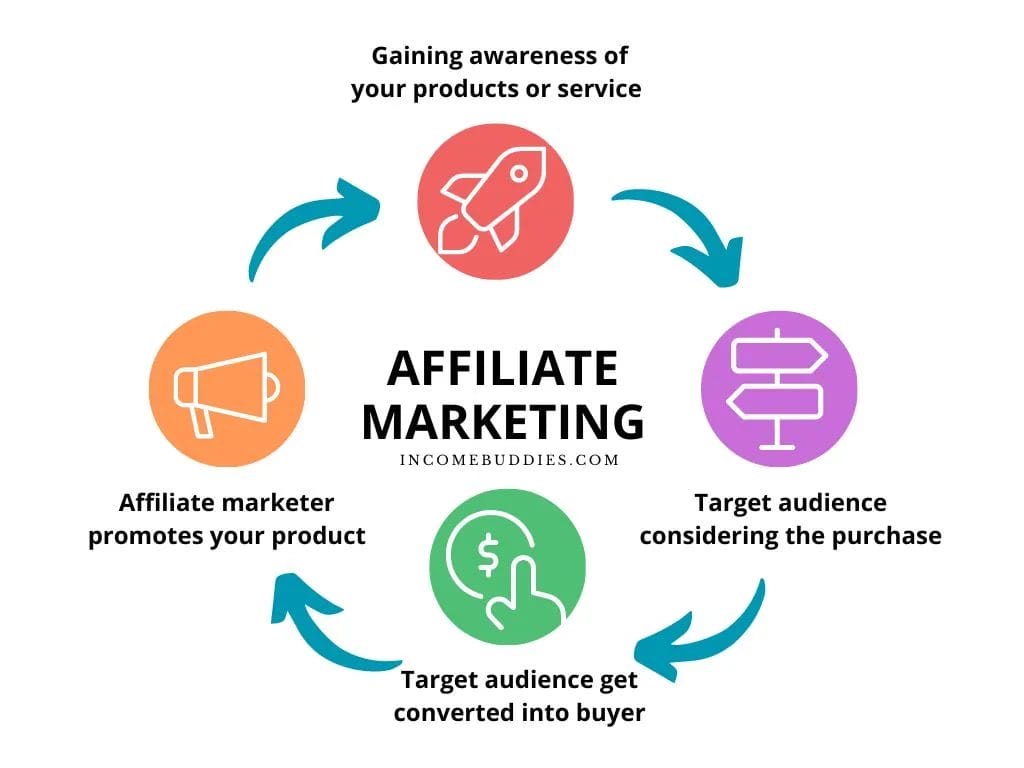
Affiliate Marketing is a performance-based strategy where businesses reward affiliates for each customer brought in by the affiliate’s marketing efforts.
It’s a symbiotic relationship where both parties benefit from mutual success while offering the buyer addition benefits in the form of a special discount.
- Business owner get sales
- Affiliate marketer get more people aware of a good product.
- Buyer get additional benefit without any additional cost.
One of the way that this website is supported is through affiliate marketing, not only I can introduce products which I like to my reader, my reader often get an additional discount leveraging the relationship I have with the business owner.
A true, Win-Win-Win situation.
Pros of Affiliate Marketing
Affiliate marketing have many advantages that makes it both very powerful and lucrative:
- Cost-Effective: Pay affiliates only for actual sales or leads, ensuring a positive return on investment.
- Diverse Reach: Leverage the varied audience of affiliates to reach demographics you might not access otherwise.
- Performance-Driven: Align incentives with results, motivating affiliates to actively promote your products or services.
Cons of Affiliate Marketing
Regardless, there are some challenges that come with relying on affiliate partnerships:
- Quality Control: Limited control over the affiliate’s marketing strategies and tactics.
- Risk of Fraud: Monitor for potential fraudulent activities to protect your brand and commissions.
- Dependency on Affiliates: Success hinges on the effectiveness and commitment of your affiliates.
Getting Started with Affiliate Marketing
If you want to get started with affiliate marketing, here are some steps you may want to take:
- Create an Affiliate Program: Establish a clear and enticing program structure to attract potential affiliates.
- Provide Marketing Materials: Equip affiliates with compelling creatives and resources to effectively promote your brand.
- Monitor and Optimize: Regularly assess affiliate performance, optimizing the program for maximum impact.
Affiliate marketing is basically a form of strategic partnership, it is a way to amplified reach and mutual success.
How to Choose the Right Digital Marketing Channels
Marketing is one of the most important concept you need to master if you want to get your service or product known to the word.
With so many type of marketing channels, knowing how to choose the best digital marketing tools can help you maximize your reach, engagement, and most importantly, your conversion rates.
1. Understanding Your Audience
For digital marketing, one size does not fit all.
Every one of your audience is unique, and understanding their preferences is paramount.
Begin by creating detailed buyer personas to identify demographics, behaviors, and preferences. You can do so by:
- Utilize tools like Google Analytics and social media insights to gather data and paint a vivid picture of your audience.
- Create a poll or only survey and ask your audience.
2. Assessing Channel Relevance
Digital marketing offers many different channels, from SEO and PPC to social media, email marketing, and beyond.
Not all channels are created equal, and their effectiveness varies across industries.
Consider the following:
| Marketing Channel | Strengths | Weaknesses |
|---|---|---|
| Email Marketing | Direct communication with your audience | Risk of being marked as spam |
| Webinar Marketing | High engagement | Requires significant preparation |
| Social Media Marketing | High engagement | Requires consistent content creation |
| SEO | Organic visibility | Takes time to see results |
| Content Marketing | Builds authority and trust | Requires ongoing content creation |
| PPC | Immediate results | Costs can escalate quickly |
| Word of Mouth/Referral Marketing | Builds credibility and trust | Relies on customers to spread the message |
| Influencer Marketing | Leverages existing audience | Dependence on influencer reliability |
| Affiliate Marketing | Performance-based payment model | Requires effective affiliate management |
Always prioritize channels aligning with your business goals and target audience.
3. Aligning with Business Goals
Define your marketing goals clearly.
- Are you aiming for brand awareness?
- Are you looking for lead generation?
- Are you targeting to make direct sales?
Each channel has its strengths; for instance, social media excels in brand building, while PPC can be a powerhouse for immediate sales.
Consider this:
- Brand Awareness: Leverage platforms like Instagram and Twitter for visually appealing content.
- Lead Generation: Implement lead magnets in email marketing campaigns.
- Direct Sales: Utilize PPC campaigns to target high-intent keywords.
As a digital marketer myself, I find it really important to regularly revisit and reassess your goals as your business evolves.
4. Budgeting Wisely
Budget constraints are a reality, but they shouldn’t limit your reach.
Allocate your resources strategically, focusing on channels that offer the best return on investment.
Consider the 70-20-10 Rule:
- 70% on Proven Channels: Allocate the majority of your budget to channels that consistently yield results.
- 20% on Experimental Channels: Invest in emerging channels to test their efficacy.
- 10% on Innovative Channels: Allocate a small portion for cutting-edge, experimental strategies.
5. Analyzing and Adapting
Continuous analysis is the key to successful digital marketing.
Regularly review your analytics to identify what’s working and what needs adjustment.
Steps to implement A/B testing to fine-tune your campaigns for optimal performance.
- Define Your Goal: Know what you want (clicks, conversions, engagement).
- Choose One Thing: Pick one element to test (headline, image, etc.).
- Create Two Versions: Make A and B, changing only that one thing.
- Split Your Audience: Randomly show A to one group, B to another.
- Measure Results: Track metrics for both versions.
- Implement Changes: Keep the better-performing version.
- Repeat: Test different elements regularly for ongoing improvement.
Time To Learn More About Digital Marketing Strategies
Digital marketing success is not a one-size-fits-all equation.
Good digital marketing is about,
- Understanding your audience.
- Aligning with your goals.
- Constantly refining your approach.
You don’t need to choose only one marketing channel, you can choose a combination or a mix of marketing channel to help you get your message out to your audience.
Leveraging the best digital marketing platform, you can choose the right mix of online marketing channel that is most align with your marketing goals and increase your overall conversion rate.
Read Also:
- 7 Best Teachable Alternative for Course Creators (Free and Paid)
- LearnWorlds Features: In-Depth eLearning LMS Overview
- ThinkiFic Features: Course Creator’s In-Depth Overview
- +59 Best Proven Membership Site Ideas to Get Started This Year (Read First)
- Passion.io Review 2024: Still The Best App For Coaches & Creators? (Limited Time Lifetime Deal)
Join 900+ BUDDIES who are growing their wealth with our weekly Income Newsletter
Antony C. is a dividend investor with over 15+ years of investing experience. He’s also the book author of “Start Small, Dream Big“, certified PMP® holder and founder of IncomeBuddies.com (IB). At IB, he share his personal journey and expertise on growing passive income through dividend investing and building online business. Antony has been featured in global news outlet including Yahoo Finance, Nasdaq and Non Fiction Author Association (NFAA).

